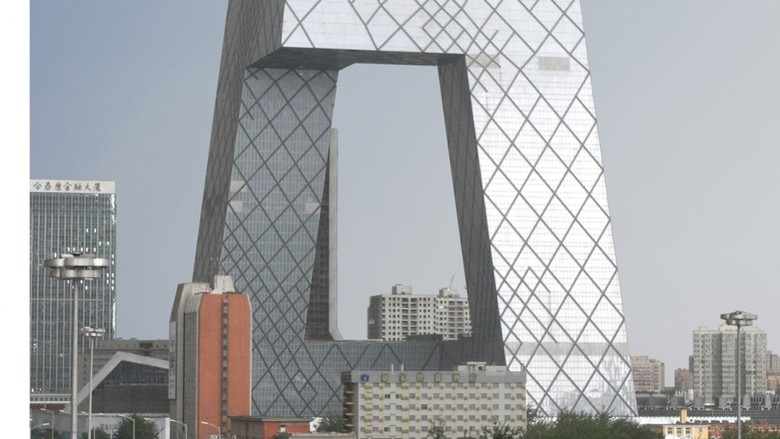China Makes Move Away from 'Weird' Architecture Official
About a year and a half after Chinese leader Xi Jinping called for an end to "weird architecture" in China, the country's State Council issued an official directive that says no to "oversized, xenocentric, weird" architecture devoid of cultural tradition.
The directive (link in Chinese) addresses iconic buildings like OMA's CCTV Headquarters – referred to as "big pants" by locals – but also the spate of copycats in the country: the New York Times reports that "China is home to at least 10 White Houses, three Arcs de Triomphe and one Eiffel Tower." Buildings should instead be "suitable, economic, green and pleasing to the eye."
Given Xi Jinping's comments in October 2014 in response to the country's huge – but now waning – construction boom, the directive is not a complete surprise, though it remains to be seen how "weird" and "suitable" will be defined and who will determine if new projects meet the new standards. Whatever the case, public buildings are the focus of the directive, meaning private buildings might still see some attention-getting weirdness.
A more objective clause within the directive addresses gated communities. No more will be built, and those that have been built will have their roads opened up for public access. Here, the reasoning is to reduce the burden on congested roads, rather than any commentary on private enclaves for the rich.
See our feature on China's "un-weird" architecture that we published back in 2014 for some examples of how some Chinese architects have been designing in more suitable ways for years.
Verwandte Artikel
-
A Loop for the Arts: The Xiao Feng Art Museum in Hangzhou
Eduard Kögel, ZAO / Zhang Ke Architecture Office | 15.12.2025 -
-
-
-
Inside Out: Avant-garde in Shangri-La
Eduard Kögel, Zhaoyang Architects | 30.06.2025
